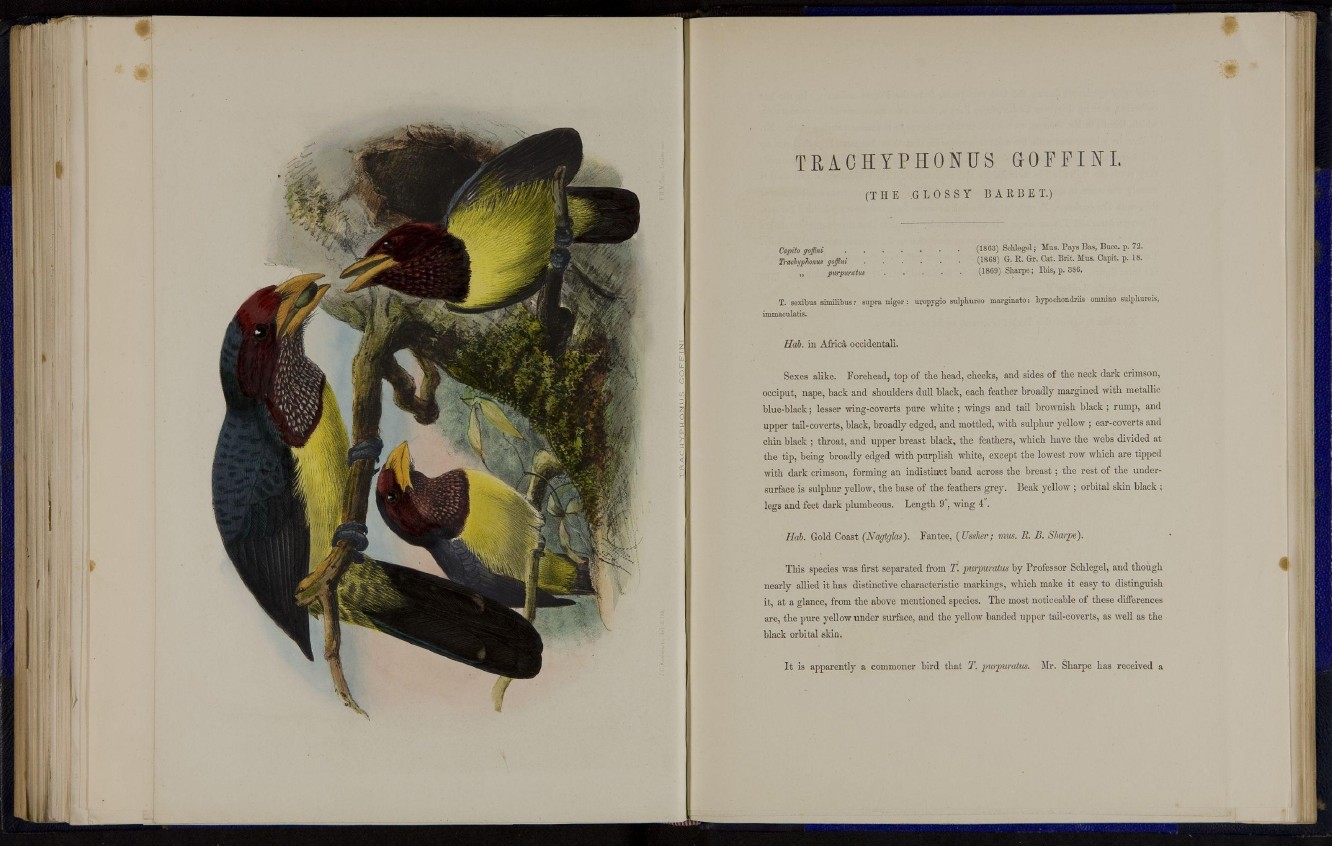
T R A C H Y P H O N T J S G O F F I N I.
( T H E . G L O S S Y B A R B E T .)
Capito goffini (1863) S c h l e g e l ; M u s . P a y s B a a , B u c c . p . 7 2 .
Trachyphonws goffini (1868) G . E . G r . C a t . B r i t . M u s . C a p i t . p . 1 8 .
„ purpuratiu (1869) S h a r p e ; I b i s , p . 3 8 6 .
T . sexibus s i m i l i b u s : s u p r a n i g e r : u r o p y g i o s u l p b u r e o m a r g i u a t o : h y p o c k o u d r i i s o m u i n o s u l p h u r e i s,
i m m a c u l a t i s .
Hah. in Africa occidentali.
Sexes alike. Forehead, top of the head, cheeks, and sides of the neck dark crimson,
occiput, nape, back and shoulders duU black, each feather broadly margined with metallic
blue-black; lesser wing-coverts pure white ; wings and tail brownish black ; rump, and
upper tail-coverts, black, broadly edged, and mottled, with sulphur yellow ; ear-coverts and
cliin black ; throat, and upper breast black, the feathers, which have the webs divided at
the tip, being broadly edged with purplish white, except the lowest row which are tipped
with dark crimson, forming an indistinct band across the b r e a s t ; the rest of the undersurface
is sulphur yellow, tha base of the feathers grey. Beak yellow ; orbital skin black :
legs and feet dark plumbeous. Length 9", wing 4".
Hob. Gold Coast (Naglcjlas). Fantee, (Ussher; mus. li. B. Sharpe).
This species was first separated from T. purpuraius by Professor Schlcgel, and though
nearly allied it has distinctive characteristic markings, which make it easy to distinguish
it, at a glance, from the above mentioned species. The most noticeable of these differences
are, the pure yellow under surface, and the yellow banded upper tail-coverts, as well as t he
black orbital skin.
I t is apparently a commoner bird that T. purpuraius. Mr. Sharpe has received a